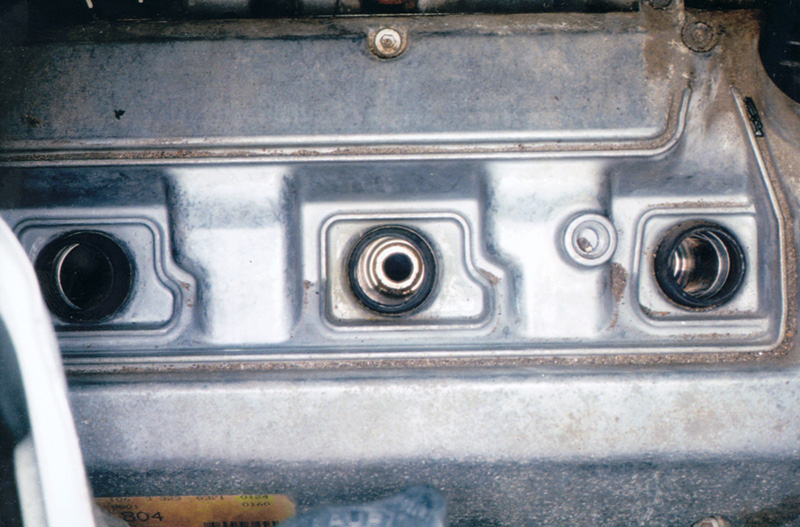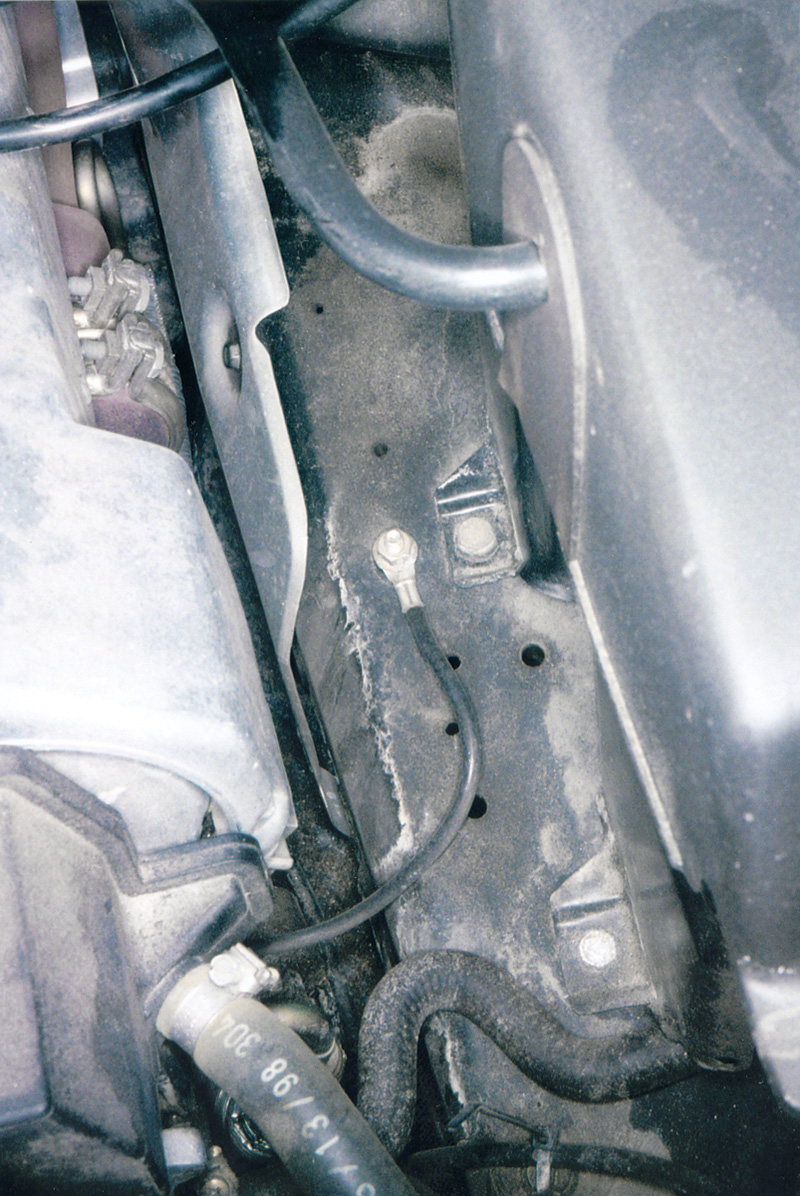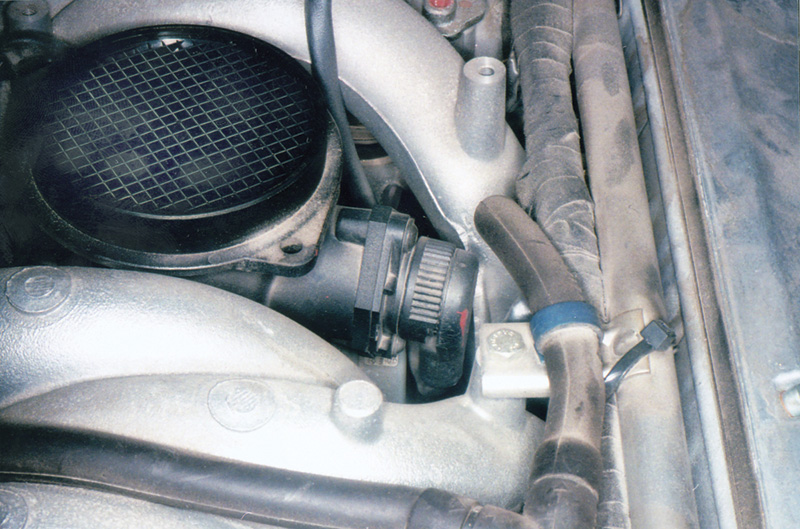What an awkward word! But it should be awkward; we use it vaguely to describe a large variety of awkward problems. Generally speaking, anything that goes amiss among the ignition key, the accelerator pedal and the drivewheels is a driveability problem. Well, OK, maybe not a flat tire, but almost anything else. So if there’s a vibration when braking or turning, that’s not a driveability problem; but if there’s one while accelerating or decelerating, it is. If a car doesn’t accelerate properly because the parking brake drags, that’s not a driveability problem; if it doesn’t accelerate properly because the timing chain is off one tooth, it is. All right, I grant you, some we won’t know about until we solve them.
We can divide driveability problems between those that set a DTC and those that don’t. Of course, even this is at least partly artificial. Given the complexity of a modern engine management system, it is entirely possible that exactly the same driveability problem could set a code in one car and not in the next. What’s more, sorting between codes and no-codes doesn’t really correspond very closely to the vehicle systems – sometimes a system sets a misleading trouble code as a consequence of the original problem or so many such incidental trouble codes, you know things couldn’t be as bad as that, or all the doors and fenders would fall off the car. However, it is a convenient way to divide them up for diagnostic purposes, so we’ll follow it here even knowing there are contrary quibbles. This issue, we’ll look at some uncoded driveability problems and next time at those with codes.
Why the Codes?Isn’t it handy that automotive engineers designed systems with self-diagnostics? Now, as they say, cars can fix themselves, or at least diagnose themselves. Right. Just as some people believe the computer now can tell you what part to replace, other people think the system was designed to make repair easier. Nope. The OBD II system exists to optimize the vehicle’s emissions by making a failure in the emissions systems more evident and then diagnosis and repair of those systems more transparent. If that makes the rest of the car’s systems easier to work on, good. But that’s not the original purpose of the emissions regulations. But it is why an emissions system can be good for solving driveability problems: When things go wrong that affect how the car delivers torque to the drivewheels, this usually involves something that has degraded the emissions performance. So we can use that decline in the emissions-control function as a key to solve the other problems, perhaps the one the car’s owner actually notices and cares about directly. |
This kind of problem is inescapably anecdotal, the stuff of shop ‘war stories’ – the cars that left everyone pulling his hair for days, the cars that made you realize there was a good side to the landfill business, the cars dragged on a hook or flat-bedded from one unhappy shop to the next until finally they came to you. But they’re also the cars that give you the most interesting challenges, the cars that build your reputation as no others can, the cars that owners keep bringing back to you as long as they have the car because you’re ‘the only one who could fix it.’ So it’s usually worth the extra time and effort required to unravel that first, nearly impossible problem. Of course, the secret of these ‘nearly impossible’ problems is usually something you realize afterwards was head-bangingly simple, just not obvious.
Fastidious Failure
The owner of this 126 (engine 117) really liked his car clean and polished. And that’s fine. Keeping a car clean and bright keeps the paint clear and prevents rust. While modern paints are much more durable than the stuff used before, a good wax still provides some measure of extra protection for the finish. Regular cleaning removes the residue of road salt and sand that otherwise builds up in all sorts of places under the car, all with bad effects. Besides that, people who keep a car meticulously clean are somewhat more likely to take care to have regular maintenance done properly, as did this car owner.
This car owner took pride in keeping his 126 looking like it just rolled off the PDI line. The paint and chrome were bright; the glass was clear; the leather looked fresh and felt smooth and pliable. He even kept the engine sparkling because he liked the gleam of the shining, powerful motor under the hood. He had gone so far as to wax and polish the top of the air cleaner and a few other visible engine components.
Imagine his irritation and alarm, then, when after one particularly thorough cleaning, the car ran with a shaky engine. He thought, reasonably enough, something had gone damp but would dry out as soon as he drove far enough for the engine to run at normal operating temperature for an hour or so.
Not a bad plan, if it had worked. It didn’t, of course, or you wouldn’t be reading about it here. The shake continued, and though he sometimes thought it was getting better, after a day or so he had to finally admit to himself that this was just the power of suggestion. So he brought the car to the shop that regularly worked on his Benz.
At the shop, they knew this car owner and the care he took with his car. It also seemed to them likely that water had crept somewhere into a coil secondary boot or cable insulator to short out the spark, though there was always the possibility of some problem in the fuel injection system. But they reasoned further, with a damp secondary circuit, the miss must have continued long enough for a carbon track to grow, and so they concentrated on chasing that.
A power-balance test quickly identified two cylinders, each with a constant miss, the first two on the driver’s side, cylinders 5 and 6. But the oscilloscope spark patterns to those cylinders and to all the others looked very close to normal, neither crimped down to low voltage through a dead short nor popped up to coil output max by an open secondary. The shop was not inclined to run a compression test this early in the diagnosis because there seemed such little chance of a sudden, two-cylinder loss of compression just because the owner washed the car. Besides, in the sound of the starter crank, you usually can hear a cylinder-specific compression loss, and everything sounded normal on this one.
But a fuel problem was another story, at least for the cylinders with the leak. The connectors are relatively more exposed to spray and potentially knocked loose by a brush or a blast. But checking the resistance through each of the suspect injectors showed them right on the money, and the harness showed the right pulse for a plausible time when the engine was running. That left a plugup or other mechanical block to the fuel, unlikely on two adjacent cylinders but nowhere else. Monitoring pressure drop from the engine-off residual showed each of them was squirting fuel.
Then came the return to fundamentals, which we all know should have been the first step all along, but all of us forget from time to time, as did the guys in this shop. Driven by the elimination of all the more plausible alternatives, they went back to a compression test, although they just knew the compression was fine. And they were right, the compression was the same as for the other cylinders. But doing the compression test solved the problem. When they pulled the covers and boots off the plugs down in their wells, the cylinder misses were clear: Water had puddled around the spark plugs in cylinders 5 and 6, blown in by the force of the relentless cleaning. When the water got deep enough, the spark chose it as the laziest path to ground, not the path through the ground electrode of the spark plugs. But the resistance of the water was still more than a dead short would have been, so the scope patterns still looked within a normal range.
Several other spark plug wells had water in them, too, but not deep enough to ground out their cables. The engine’s ignition shielding could keep water out while driving normally, even during drenching rainstorms, during anything short of submersion of the engine under water. But the over-vigorous engine spray cleaning blew water in unanticipated directions, around the ignition shields, under the plastic and into the plug wells. Some wells should have water in them, but not these! Continued long enough, the water and the consequent secondary partial short could have caused dilution of the crankcase oil with the fuel passing the rings, accelerated wear of the engine from the thinned lubricant, a considerable increase in fuel consumption and a large variety of other maladies. Fortunately, the shop had the foresight to blow the water out with compressed air before pulling the plugs (a good shop policy when removing plugs under any circumstances), and the fastidious car owner let prudence subdue his enthusiasm for tidiness around electrical components thereafter.
Enough’s Enough
Well, this was really annoying. The customer drove in with a fuel line leak. The shop fixed that with no particular problem… er, except that then the car wouldn’t start. Arguably, this is better than the risk of a pump-fed car fire, but the shop already knew the customer would have reservations about that improvement. Spark was sharp and bright, fuel pressure was not only good, but almost 1.0 bar high, over what the specs called for. The battery was several years old, but the tests showed it putting out all the amps you’d want while keeping the voltage over 10 volts. Nonetheless, it was a battery brand the shop had bad experiences with, so they tried replacing it with another from inventory, all (how’d you guess?) to no avail.
They pulled the plugs, which were not the brand specified. So they replaced the errant plugs with new ones from the proper source. But the car was unconvinced and still didn’t start. They threaded in another fuel filter and installed another distributor rotor, although there was no particular reason to suspect the problem lay there.
If you guess at an answer and bolt in parts to suit, your odds of fixing the car are just about zilch. And that’s what the shop found. Their new rotor and filter appeared to work fine, yet the engine appeared to fail to start every time. Finally, in desperation, they searched around their parts inventory for things to dump on the car in hopes one of them would work.
A spanking new neutral/safety switch made a dashing fashion statement on the underside of the car. But the engine remained quietly nonfunctional. A second new set of spark plugs effectively emptied the boxes of plugs, but left the engine still, after a moment’s deceptive startup attempt. The only component left was a fuel pressure regulator, bolted on without enthusiasm, only because it was the only thing left on the shelf that fit this car.
The engine started up and ran perfectly normally. Evidently the high pressure was enough to flood the plugs every time. It’s natural to assume the specifications allow a certain amount of tolerance on either side of the spec. But it’s mistaken to suppose this is unknown to the folks back at the factory. When they list a fuel pressure specification or some other vehicle running specification, they have the means to check and determine what the limits of the tolerance are. If there’s a range of fuel pressures the system can work with, they had the best chance of anyone to test and determine this. They have no motivation to fib about it, so you can take their numbers seriously. If they say the fuel pressure at crank should be between 84 and 102 psi., it’s most likely the car won’t start or run below 83 or above 103. They had every reason and every opportunity to find out the real numbers and report them accurately; they had no reason to fake the results.
Factory specs are not guesses or wishes. They really are serious about running the tests and making the measurements. If something falls outside those specifications, that something is amiss; it requires testing and correction on your part. Do not be misled by assumptions that the factory fluffed the numbers for one reason or another. At least with these cars, they didn’t.










0 Comments